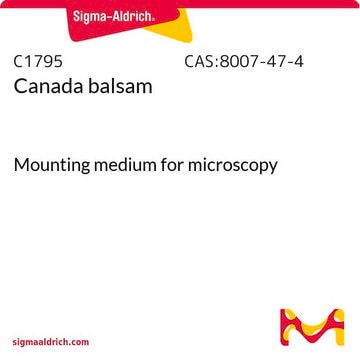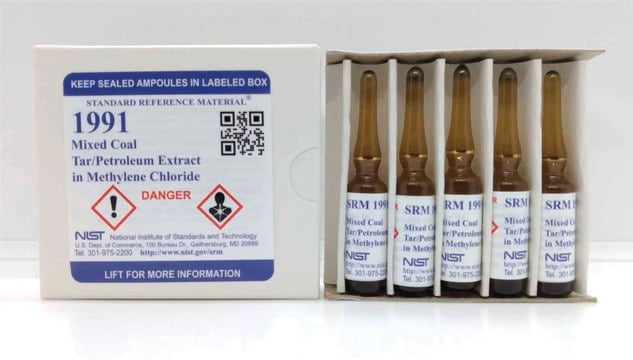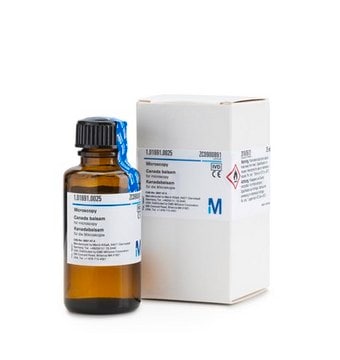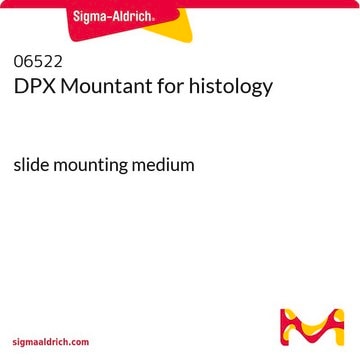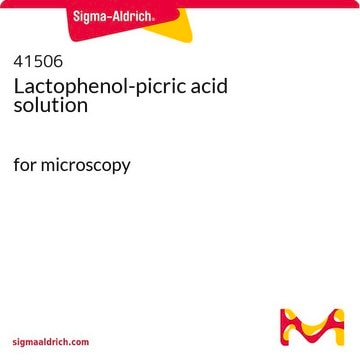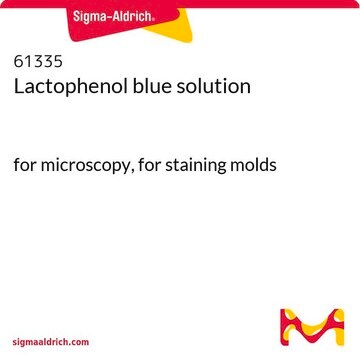03854
Creosote from beechwood tar
Synonim(y):
Beechwood creosote
About This Item
Polecane produkty
Poziom jakości
pozostałość po prażeniu
≤0.01% (as SO4)
tw
200-220 °C (lit.)
temp. przejścia
solidification point <−20 °C
gęstość
1.09 g/mL at 20 °C
Zastosowanie
metabolomics
vitamins, nutraceuticals, and natural products
InChI
1S/C7H8O2/c1-9-7-5-3-2-4-6(7)8/h2-5,8H,1H3
Klucz InChI
LHGVFZTZFXWLCP-UHFFFAOYSA-N
Szukasz podobnych produktów? Odwiedź Przewodnik dotyczący porównywania produktów
Powiązane kategorie
Opis ogólny
Zastosowanie
Działania biochem./fizjol.
Hasło ostrzegawcze
Danger
Zwroty wskazujące rodzaj zagrożenia
Zwroty wskazujące środki ostrożności
Klasyfikacja zagrożeń
Acute Tox. 3 Dermal - Acute Tox. 3 Oral - Acute Tox. 4 Inhalation - Aquatic Chronic 2 - Eye Dam. 1 - Muta. 2 - Skin Corr. 1A - STOT RE 2
Organy docelowe
Nervous system,Kidney,Liver,Skin
Kod klasy składowania
6.1A - Combustible acute toxic Cat. 1 and 2 / very toxic hazardous materials
Klasa zagrożenia wodnego (WGK)
WGK 3
Temperatura zapłonu (°F)
165.2 °F - closed cup
Temperatura zapłonu (°C)
74 °C - closed cup
Środki ochrony indywidualnej
Faceshields, Gloves, Goggles, type ABEK (EN14387) respirator filter
Choose from one of the most recent versions:
Masz już ten produkt?
Dokumenty związane z niedawno zakupionymi produktami zostały zamieszczone w Bibliotece dokumentów.
Nasz zespół naukowców ma doświadczenie we wszystkich obszarach badań, w tym w naukach przyrodniczych, materiałoznawstwie, syntezie chemicznej, chromatografii, analityce i wielu innych dziedzinach.
Skontaktuj się z zespołem ds. pomocy technicznej